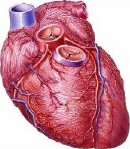
MONDAY, Nov. 14 (HealthDay News) — Efforts to use stem cells to help revitalize hearts damaged by heart attack got a boost from three studies presented Monday at the annual meeting of the American Heart Association.
Cardiologists attending the Orlando, Fla.-based conference heard how infusing bone marrow stem cells into the heart soon after a heart attack might improve survival, and how cardiac stem cells might also come to the aid of patients battling heart failure.
Doctors have recently been using bone marrow-sourced stem cells to repair the damage done to cardiac tissue by heart attack. And two new studies presented at the meeting may help define the “window of opportunity” during which this therapy is likely to save lives.
Infusing these cells into the heart several days after a heart attack is safe and provides benefits that last up to five years, one study found. However, waiting 10 to 20 days after a heart attack to inject the cells back into the heart is too long, the second trial concluded.
In the first study, German researchers led by Dr. David Leistner of the University Hospital of Frankfurt found fewer deaths, fewer subsequent heart attacks and fewer procedures needed to open blocked arteries in people who received bone marrow stem cells within a few days of a heart attack. Earlier studies had shown that this experimental treatment improved heart muscle function for up to four months after a heart attack, but the new study, involving 62 patients, showed that these benefits last for up to 5 years.
One expert was pleased with the results.
“This is a big deal,” said Dr. Joshua M. Hare, the director of the Interdisciplinary Stem Cell Institute at the University of Miami Miller School of Medicine. “There is a lot of controversy in the field about how much heart function actually improves after this treatment,” he said. “Many experts argue that although published results were statistically significant, that they might not have been clinically meaningful. The thing that matters the most is whether or not there was a reduction in [death], and this study shows that there might be.”
However, another study presented at the meeting found that waiting 10 to 20 days after a heart attack to infuse bone marrow stem cells may be too long. The findings will also appear in the Nov. 14 online edition of the Journal of the American Medical Association.
The study involved 87 patients who had undergone angioplasty and/or placement of an artery-opening stent after heart attack. The researchers injected stem cells into the patients’ hearts about two to three weeks after a heart attack — only to find that therapy did not improve heart function after six months.
“When you have such a brand new treatment, negative data can be just as helpful as positive data,” said Hare, who also wrote a JAMA editorial that accompanied the study . The take-home message, according to Hare: “This is too late to give the cells to the heart.”
Study co-author Dr. Robert Simari, a cardiologist at the Mayo Clinic in Rochester, Minn., agreed. “We are modifying our prior enthusiasm for bone marrow stem cells and developing some framework for their use,” he explained.
Stem cells sourced from bone marrow are not the only type being studied in this way, however. A third study looked at the use of stem cells originating from the patient’s own heart.
The results of a phase 1 (early) clinical trial presented at the AHA meeting, published simultaneously in The Lancet, found real benefit from cardiac stem cell infusions for heart failure patients who had suffered a heart attack. This is the first time this approach has been tested in humans, the team said.
In the Stem Cell Infusion in Patients with Ischemic Cardiomyopathy (SCIPIO) study, researchers retrieved cardiac cells from individuals who were undergoing bypass surgery to re-open blocked arteries. The cells were taken from undamaged areas of the heart, purified, harvested and then injected back into the patients’ hearts four months later.
And it worked. Dr. Roberto Bolli of the University of Louisville and colleagues report that the therapy improved heart function for 16 people with heart failure who received an infusion of their own cardiac stem cells. What’s more, the scars on their hearts are healing, the study showed.
“This is more promising in terms of the magnitude of the effect than what we are seeing with bone marrow stem cells,” said one expert, Dr. Kenneth B. Margulies, a professor of medicine at the Hospital of the University of Pennsylvania in Philadelphia.
Still, he cautioned that the research is in its infancy, and more studies are needed. Right now, this procedure is for patients who are in the throes of a heart attack, he noted. “We are getting more bang for the effort when this is not done in the middle of crisis,” he said.
While more study is needed to understand the best ways to use the different types of stem cells after a heart attack, they will both likely have a big role in preventing or reversing damage after a heart attack in the future, Simari said.
“In the next 10 to 15 years, these stem cells will be an off-the-shelf sell. We won’t need to harvest them and can take them off the shelf and deliver them at that time or soon thereafter,” he said. He conjectured that one healthy donor could provide thousands of doses.
More information
There’s more on heart attack at the American Heart Association.

